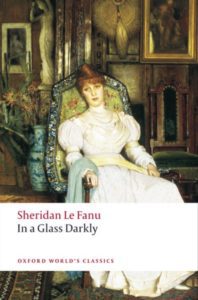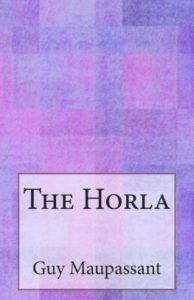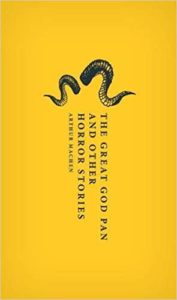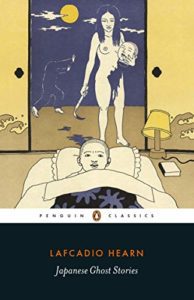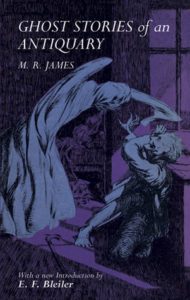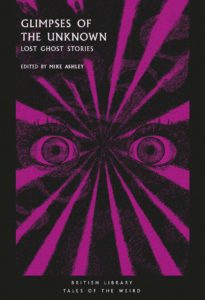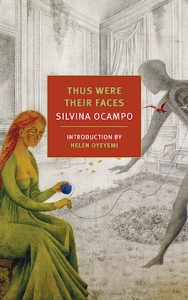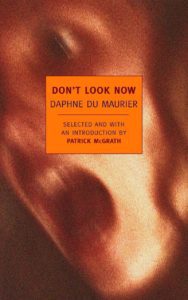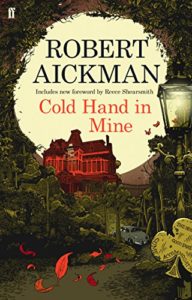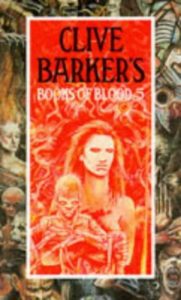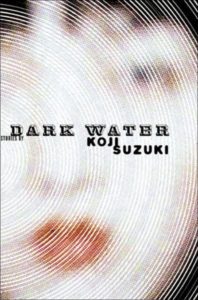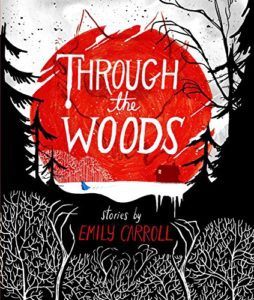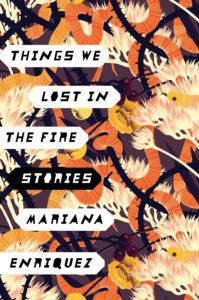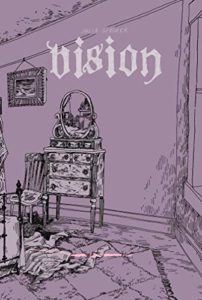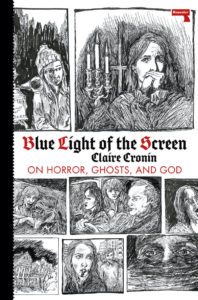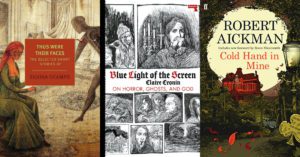
The ghost story was designed for the short form. It emerged a long time ago, from folklore and oral legends; some of our oldest stories are ghost stories. In horror literature, one place where the genre first appeared was through inset narratives in Gothic novels. Within a larger story, one character would tell a tale of the returning dead. This served not so much to further the larger plot as to deepen and derange it. Like a ghost itself, the ghost story is an interruption of the present. And the scene of a ghost story’s telling is, like a nightmare, a vivid and emotional reality inside a larger, more mundane one.
While there have been beautiful novel-length ghost stories written since these early days, this list focuses on my favorite short ghost stories, primarily from the Western literary canon. Many of the following come from the “golden age” of the genre, which ran from the mid-nineteenth to early twentieth century in, America, the United Kingdom, and other parts of Europe. Many of our contemporary expectations of the ghost story—across literature, film, and television—can be traced to this era. It’s no wonder that in true ghost stories—whether told on city ghost tours, ghost hunts, reality TV shows, or in conversations with believers—ghosts are so often described as looking “Victorian.” It seems that the Victorian era is as far back as we can imagine someone being dead. I don’t think it’s a coincidence that this was the era when the living were first able to be photographed, and when many people entertained themselves with ghostly tales.
The ghost story interests me both as a way to think about the world and as a source of entertainment. There is tragedy here, and horror, and questions about trauma, history, and time. But ever since I was old enough to read, I have found great comfort in this genre. It’s a topic I explore in my new book, a memoir about horror called Blue Light of the Screen: On Horror, Ghosts, and God.
A really good and scary ghost story focuses me. It pulls me from my ordinary, self-focused fears and connects me with something older and more mysterious. The books below have been chosen for their particular stories, and are listed in chronological order by the date of the story’s publication.
***
In a Glass Darkly by Sheridan Le Fanu
Sheridan Le Fanu, an Irish writer of the mid-nineteenth century, is one of the major figures of the golden age of ghost stories, coming towards the earlier side of that timeline. He’s cited as an influence for horror writers like M. R. James and Bram Stoker, who ended up eclipsing him in fame—I’m not sure why. Le Fanu’s stories have the feeling of being written by someone who truly believes in the supernatural. This collection was published just before Le Fanu’s death, and was written over a long period of grief and isolation following the loss of his wife. It feels like this state of mind, combined with Le Fanu’s expertise in religion and occultism, gives the tales their eerie power. My favorite is still “Green Tea,” an oft-anthologized story of spiritual horror. It tells of a preacher and theologian whose study of magical beliefs (and the philosophies of Emmanuel Swedenborg) summons a demonic spirit to his side. But the horror goes farther than that. The clergyman, like so many of Le Fanu’s characters, is poised on the edge of suicidal despair. We learn that he’s one of many modern intellectuals who feel this way. The spirit at his side, if it is indeed a spirit, only drives him further into preexisting psychic pain.
The Horla by Guy de Maupassant
I love Guy de Maupassant’s gilded and pessimistic fiction. Though he mostly wrote about complicated class and gender relationships in Parisian society, he also has a number of supernatural stories. “The Horla” is one of these, and is almost claustrophobically interior. Through a character’s diary entries, it tells of a man who believes he is becoming possessed by an invisible, malevolent entity “that lives on milk and water.” The spirit first presents itself as an illness and then overtakes the man’s perception of life. Maupassant, by all accounts, was a person haunted both by mental illness and syphilis, which is what killed him in 1893. I imagine the author’s own experience is reflected—or prophesied—in these pages.
The Great God Pan and Other Horror Stories by Arthur Machen
Like Le Fanu, Arthur Machen seems to have been a true believer in the supernatural. As the son of an Anglican priest, Machen grew up to create his own magical, esoteric form of Christianity, and these beliefs reveal themselves in his fiction. Three favorite stories from this book, which all focus on Machen’s unusual definitions of evil and his depictions of the occult, are The Great God Pan (a novella), “The White People,” and “The Inmost Light.”
Japanese Ghost Stories by Lafcadio Hearn
You may have encountered some of these stories in Masaki Kobayashi‘s Kwaidan (1965), which adapts four of Hearn’s tales. The film retells one of my favorites, which in this book is called “The Reconciliation.” It’s a tale of a ghostly wife who was abandoned by her Samurai husband and their eerie reunion. Japanese Ghost Stories draws from several of Hearn’s books of ghost stories and legends, which he collected while living in Japan. Hearn himself was very unusual: born on a Greek island, abandoned by his parents, and raised in Ireland and England, he spent his life traveling the world and immersing himself in various cultures. He finally settled in Japan at the end of his life, where he married a local woman (who reportedly gathered ghost stories with him), and raised a child. Hearn had a particular interest in the beliefs of Japanese Buddhism, and so those rituals and entities show up in a number of his tales. Hearn has a wonderfully understated way of narrating, which contrasts with the wild paranormal events he describes. My favorite stories are the tragic ones, which tend to focus on suffering female spirits. In addition to “The Reconciliation,” I like “A Passional Karma” and “The Story of O-Kame.”
Ghost Stories of an Antiquary by M. R. James
Everyone who reads ghost stories knows M. R. James, whose work came to define the golden age period. But I’m recommending him again because he is so good. In a way—though I don’t mean this as a criticism—James writes the same story over and over again, with only slight variations. I call these kinds of tales “professor horror,” because they describe academic characters (professors, archivists, librarians) who are drawn into the supernatural and must use their academic training to try to get out of danger. James, who made a career as a medievalist and high-ranking academic administrator, tells of a world of bachelor scholars who are too assured of their own expertise to recognize the perils of the spirit world. James’s stories are also eminently literary—concerned with letters, deeds, journals, telegrams, translations, and ciphers. Two favorites in this collection are “Oh Whistle, and I’ll Come to You My Lad,” which is about a haunted professor on vacation, and “The Mezzotint,” about a haunted portrait that reveals the hidden past.
Glimpses of the Unknown: Lost Ghost Stories edited by Mike Ashley
Perhaps the main thing I like about this anthology of obscure British ghost stories is that so many of these authors are unfamiliar names. The editor, Mike Ashley, has chosen stories from literary magazines that were never reprinted after their first appearances. Ashley prefaces each with a note about its author, often telling readers that he has no idea who the writer was! One favorite, “The River’s Edge” by Mary Schultze, is a sentimental, somewhat religious ghost story from 1912. About Schultze, Ashley writes: “another mystery name… She had a dozen or so stories in the cheap weekly magazines just before the First World War but none of those publications provided a clue to her identity. There were several by that name alive in Britain at the time, but none identified as a writer.” The second I’d recommend, “The House of The Black Evil” by Eric Purves, is a tale from 1929 about a necromancer’s house that has become a kind of black hole. Like Schultze, Purves is an unknown author. Ashley tells us: “I’m not even sure its author wrote anything else. It’s certainly not a name I’ve come across elsewhere and I can’t find in it in any index or archive.” Something about the ghostliness of these forgotten writers increases my interest in the stories they’ve written.
Thus Were Their Faces: Selected Stories by Silvina Ocampo
“The House Made of Sugar” is an unusual haunted house story, written by Ocampo, an Argentine poet and fiction writer from the same circle as Jorge Luis Borges. Though Ocampo’s work is typically called surrealist, “The House Made of Sugar” reads as a ghost story to me. It exists somewhere between the uncanny psychological and the truly supernatural. In it, a wife has a superstitious aversion to living anywhere other people have lived before. Essentially, she fears the dead and being haunted. Her husband, who narrates the story, is unable to fulfill this strange demand. He moves them into a sparklingly white, recently remodeled house that only appears to be brand-new, then lies to her about it. Soon, the wife’s prophecy begins to take shape: the personality of the house’s former occupant takes over her own. Things get stranger from there.
Don’t Look Now by Daphne du Maurier
Two stories in this collection, “The Birds” and “Don’t Look Now,” were made into major horror films, and Don’t Look Now (1973) is one of my favorite 1970s ghost movies. Du Maurier’s story of the same name is just as bracing. If you aren’t already familiar with the plot, it tells the story of a couple who recently lost a child, and an unusual pair of psychic sisters who want to deliver a terrible message. I also recommend “Split Second,” which is about a proper English woman—a widow with a child away at boarding school—who one day has a feeling that something horrible will happen. She goes on a walk and then, suddenly, everything in her life changes; it’s as if she’s been replaced. It’s a tense and realistically drawn mystery, with Du Maurier’s favorite motif of clairvoyance.
Cold Hand in Mine by Robert Aickman
Robert Aickman, an English author of the 1960s and ’70s, is considered a writer of “strange tales” or “weird fiction,” but we could just as easily say he was a writer of ghost stories. In Aickman’s work, however, the hauntings are less obvious—more of a subtle, unsettling atmosphere than a soul that appears, dragging chains and moaning. To this end, Aickman’s work tends towards the misanthropic and paranoid, dwelling on human failings, fixations, and moments of awkwardness. My favorite stories in this collection are “The Hospice” and “The Same Dog,” which both tell of seemingly mundane circumstances that are twisted just enough off-kilter to become disturbing. In another collection, Dark Entries, I recommend “The School Friend” and “Ringing the Changes,” which both approach the idea of a haunting, but in dramatically different ways. An Aickman story always ends without a clear resolution; this uncertainty is part of why his stories are so affecting.
Books of Blood, Vol. V by Clive Barker
Clive Barker is another horror writer I came to through film. He published the short story “The Forbidden” in his multi-part horror anthology, Books of Blood, and it was adapted into the classic 1992 ghost film Candyman. While many of the beats of the film’s narrative are there in the original text, Barker’s setting is different. His story takes place in Liverpool, where Barker grew up, and tells of a graduate student researching urban legends in a low-income apartment building. So while issues of class are central, Barker’s tale lacks the American film’s addition of racial trauma, which comes through its Chicago Cabrini Green setting. These alterations are especially interesting to consider as Jordan Peele’s new Candyman approaches its releases. Regardless of what happened to Barker’s story after it made the leap from page to screen, “The Forbidden” is still tense, gripping, and eloquent.
Dark Water by Koji Suzuki
Koji Suzuki is known for creating the popular Ring series, which began with his novel, then spread into many films in Japan, America, and elsewhere. But his short story “Floating Water,” contained in this collection, was also adapted as the horror film Dark Water, which got its own Hollywood remake. It’s a story about a single mother and her young daughter, who move into a desolate apartment building and encounter signs of trauma and the spirit of a little girl. I find the characterization in Suzuki’s short story to be more interesting than in the movies. We get a greater sense of the mother’s interior, and though she’s less likable, she’s more complex.
Through the Woods by Emily Carroll
This collection of illustrated stories explores themes of violence, death, and grief with the simple power of the oldest fairy tales. I would almost recommend the book to children (and would have loved something like this when I was a kid), but the stories are so dark. Carroll’s sparsely worded narration and dialogue give just enough for us to enter her images and narratives. She shows us macabre interiors, faces full of fright, and exquisite period costumes through washes of paint and pen. I especially liked “My Friend Jana,” a ghost story about two friends, one of whom is psychic. It’s filled with ink-blotch shadows and chalky ghosts.
Things We Lost in the Fire by Mariana Enriquez
Within this recently translated collection of short stories by Argentine writer Mariana Enriquez, I discovered a haunted house tale that stayed with me. “Adela’s House” is narrated by a woman looking back on her childhood, retelling a series of frightening and mysterious events. The story revolves around her as a girl, her brother, and their neighborhood friend, Adela. The three children tell ghost stories and watch horror films together, reveling in these thrills. And then, somewhat by accident, they become part of a real horror story that will stick with the town as a legend, passed through generations of other kids. It’s written in a realistic and unsentimental way, to moving effect.
Vision by Julia Gfrörer
This is a very new, short graphic novel by a very gothic artist. Gfrörer’s simple black pen lines are spare and precise, evoking the subtlest change of expression through a few wavy marks on a face. The images, like the stories, are beautiful and vulnerable—almost romantic—but always lead to dark places. While some of Gfrörer’s earlier graphic novels offered stories of how the living deal with horrific circumstances and dead bodies, Vision deals with death, disease, and societal pressures, while also being a ghost story. It’s set in a vague past—what looks to be the Victorian era—and tells of an unhappy caretaker whose closest friend is a spirit in her mirror. It gets a bit graphic, so be forewarned.
And to close out this wonderful list, we just had to include Claire’s new book, Blue Light of the Screen: On Horror, Ghosts, and God, out now from Repeater Books! – Ed.
Blue Light of the Screen: On Horror, Ghosts, and God by Claire Cronin
Blue Light of the Screen is about what it means to be afraid—about immersion, superstition, delusion, and the things that keep us up at night. A creative-critical memoir of the author’s obsession with the horror genre, Blue Light of the Screen embeds its criticism of horror within a larger personal story of growing up in a devoutly Catholic family, overcoming suicidal depression, uncovering intergenerational trauma, and encountering real and imagined ghosts. As Cronin writes, she positions herself as a protagonist who is haunted by what she watches and reads, like an antiquarian in an M. R. James ghost story whose sense of reality unravels through her study of arcane texts and cursed archives. In this way, Blue Light of the Screen tells the story of the author’s conversion from skepticism to faith in the supernatural. Part memoir, part ghost story, and part critical theory, Blue Light of the Screen is not just a book about horror, but a work of horror itself.

